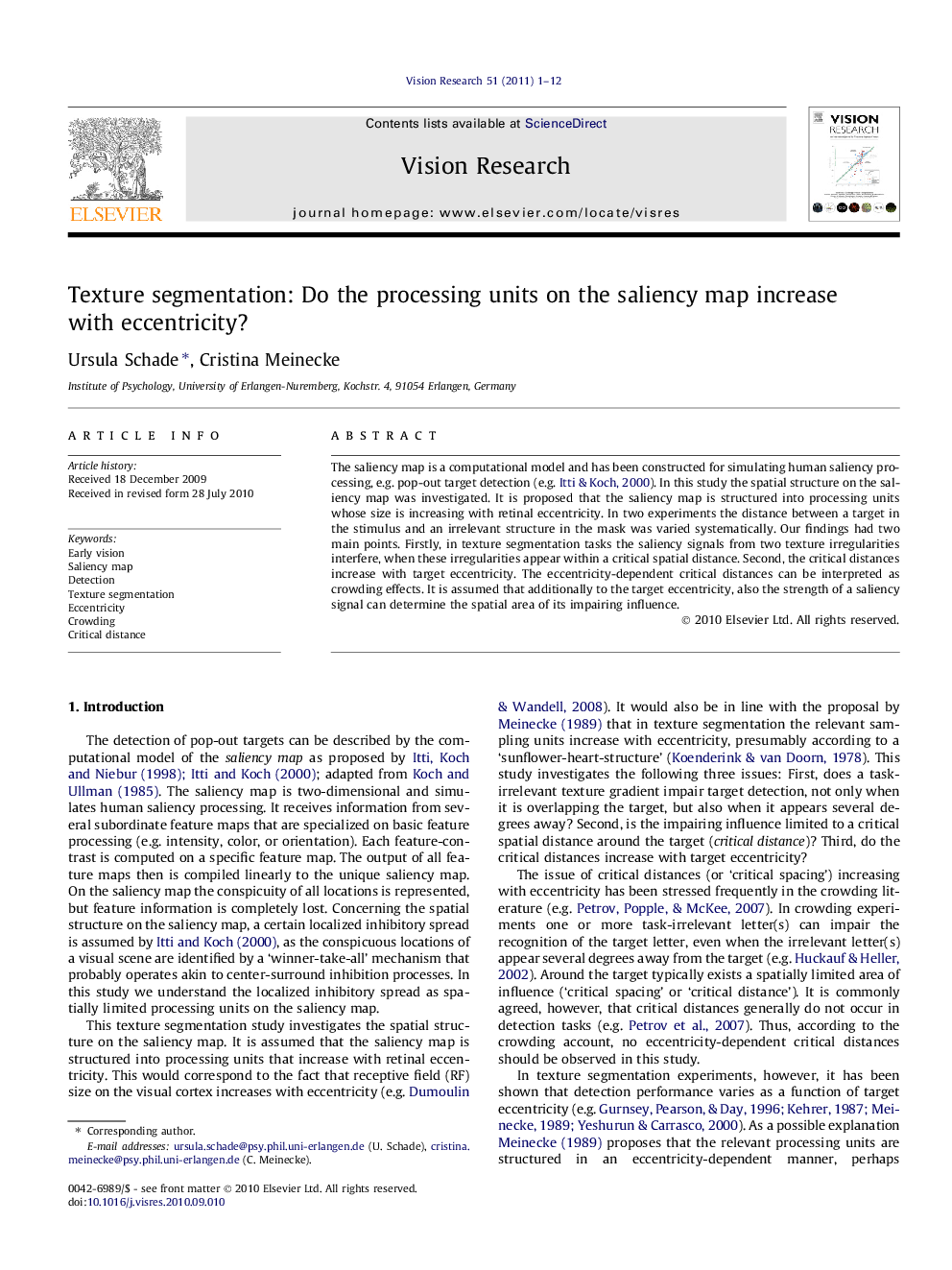| Article ID | Journal | Published Year | Pages | File Type |
|---|---|---|---|---|
| 4034331 | Vision Research | 2011 | 12 Pages |
The saliency map is a computational model and has been constructed for simulating human saliency processing, e.g. pop-out target detection (e.g. Itti & Koch, 2000). In this study the spatial structure on the saliency map was investigated. It is proposed that the saliency map is structured into processing units whose size is increasing with retinal eccentricity. In two experiments the distance between a target in the stimulus and an irrelevant structure in the mask was varied systematically. Our findings had two main points. Firstly, in texture segmentation tasks the saliency signals from two texture irregularities interfere, when these irregularities appear within a critical spatial distance. Second, the critical distances increase with target eccentricity. The eccentricity-dependent critical distances can be interpreted as crowding effects. It is assumed that additionally to the target eccentricity, also the strength of a saliency signal can determine the spatial area of its impairing influence.
Research highlights► In texture segmentation tasks a spatially remote task-irrelevant structure can impair target detection. ► Processing units on the saliency map increase spatially with retinal eccentricity. ► In the context of texture segmentation crowding can occur in detection tasks.
